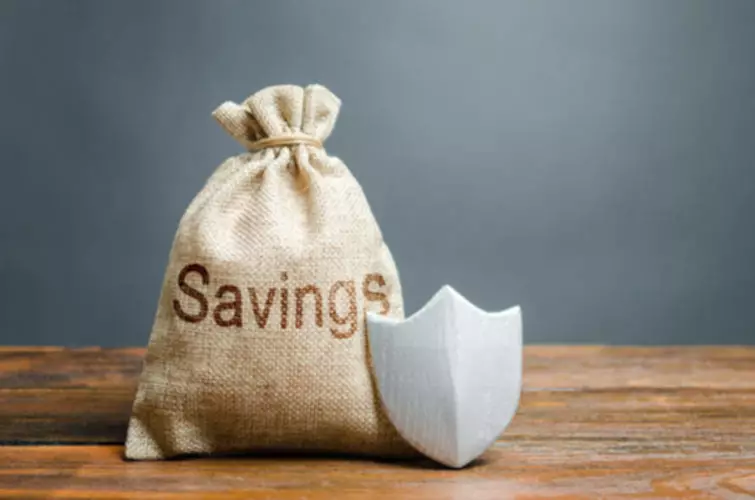Content

EBIT or Earnings Before Interest and Tax represents the value of earnings without the effect of tax rates and interest. business valuation formula EBITDA takes it a step further by removing and identifying depreciation and amortization expenses as well.
- Your list of companies that you have invested in is called your portfolio.
- It is based on information and assumptions provided by you regarding your goals, expectations and financial situation.
- While Tesla’s market capitalization is higher than both Ford and GM, Tesla is also financed more from equity.
- This product of this calculation serves as the company’s valuation.
- The reason is that an increase in revenues does not necessarily mean an increase in profitability.
- Ideally, market-based methods should be used in conjunction with an examination of earnings so that they can serve as a “reality check.”
- Though they aren’t given a numerical value, intangible assets can still bring value to a company since it consists of things such as the brand’s reputation, client lists, and intellectual property.
DCF is the most accurate and therefore the most used for actual valuation during an M&A process. Larger businesses https://www.bookstime.com/ have typically been scaled and therefore have a strategic value and/or command strategic premium.
Beware of marketing tricks!
Many buyers start out with no clear understanding of the type of business they would like to own, and wind up doing research on the fly. Buyers should research industries that they are interested in to determine future potential, while avoiding contracting markets. Note that there will always be a discrepancy between the business value based on sales and the business value based on profits. The two numbers give you an approximate range of potential values for your business. For some small businesses, the profit-based number will be more accurate because the business may have a lot of sales but also a lot of operating expenses. This means the ultimate profit potential of the business is quite low.

The price, based on the rule of thumb, does not include inventory , real estate, or other balance-sheet items such as cash and accounts receivable. We have noticed an increase in Industry Experts telling us that inventory is included in the multiples. The price derived from the rule of thumb is for the operating assets of the business plus goodwill. It also assumes that the business will be delivered free and clear of any short- and long-term debt. If any debt is to be assumed by a purchaser, it is subtracted from the price based on the rule of thumb method.
Merger specialists favor market-based valuation methods
Firms that specialize in business valuation publish guides with up to date multiples. SDE consists of how much money a business can be expected to earn over the course of the year, minus taxes, owner’s draws, and non-essential expenses. It should be well-structured, easy to understand and comprehend, take into account different industries and company sizes, and be based on current market data. The DCF method described above can be applied to business plans of startups. The discount rate used is derived from the investors’ expected return .
Calculating The Intrinsic Value Of Wolters Kluwer N.V. (AMS:WKL) – Simply Wall St
Calculating The Intrinsic Value Of Wolters Kluwer N.V. (AMS:WKL).
Posted: Thu, 24 Nov 2022 13:37:31 GMT [source]
A mix of different methods, run several times with varying scenarios, gives a feel for the possible range of company value. With the average value methods, a weighted mean value is often taken from the simplified capitalised earnings value and the net asset value. These include, for example, theBerlin method, the Vienna method, the excess profit method and the Swiss or practitioner method. The valuation is based on current prices achieved by comparable companies. The selling price is considered to be a multiple of a basic key figure, such as EBIT, EBITDA or sales. The Venture Capital Method is widely used in practice for the valuation startups. While Tesla’s market capitalization is higher than both Ford and GM, Tesla is also financed more from equity.
How to Valuate a Business
The most commonly used rule of thumb for a small business with under £1m in EBITDA is to multiple the EBITDA by 2x. Multiple’s valuation or relative valuation uses the known market valuation of number of peers within a sector, usually listed companies as their valuation is easily obtained. This ratio is then applied to your own company to provide an estimate of its valuation. There are many ways to find a value of a company, however ultimately the value of a company is only truly discovered when someone buys the business or if it is listed on the stock market. However, valuing a business is still a valuable exercise to support a wider business strategy.

In order to get that you’ll have to find a professional, which often can cost tens of thousands of dollars. The market approach determines worth by conducting research about a market.
For example, if the total sales were $100,000 for last year, and the multiple for the particular business is 40 percent of annual sales, then the price based on the rule of thumb would be $40,000. If you are a business owner based in California and looking to sell your business, aside from knowing how to calculate what your business is worth, you want your value to be as high as possible. There are several valuation approaches and strategies to amplify the value of your business, including the ones below. If you’re simply looking to get a basic idea of what your business is worth, there are a few steps you can take to get a rough estimate. SDE is like EBITDA, with owner’s salary and owner’s benefits added back in. Then, you’ll add back in any purchases that aren’t essential to operations, like vehicles or travel, that you report as business expenses. Employee outings, charitable donations, one-time purchases and your own salary can all be included in your SDE,” wrote NerdWallet.
- In the United States, business valuations are usually carried out by a professional who is Accredited in Business Valuation .
- In certain cases equity may also be valued by applying the techniques and frameworks developed for financial options, via a real options framework, as discussed below.
- Finally, EBITDA is a reliable business valuation metric that allows buyers to focus on the baseline profitability of the company.
- EBITDA is also compared with Seller’s Discretionary Earnings that is used to determine the historical cash flow of the business.
If you don’t have one, or don’t want to take the time to learn how to use one, our Business Tools contains a simple “present value of $1” table that you can use to compute the NPV of your cash flows. Your recast balance sheet shows a net current asset value of $80,000, and a net long-term asset value of $200,000. So, the minimum or base price for your business should be $280,000 — the market value of your assets. From your recast financials you can determine your historical annual earnings figure . From this you’ll subtract the portion of earnings that’s attributable to your assets alone. Anything left over is the “excess earnings” — the portion that’s attributable to the going-concern value of the business. One situation where it may be useful is if you’re trying to sell a minority interest in the company, and you want to show that there has been a pattern of receiving dividends in the past.
